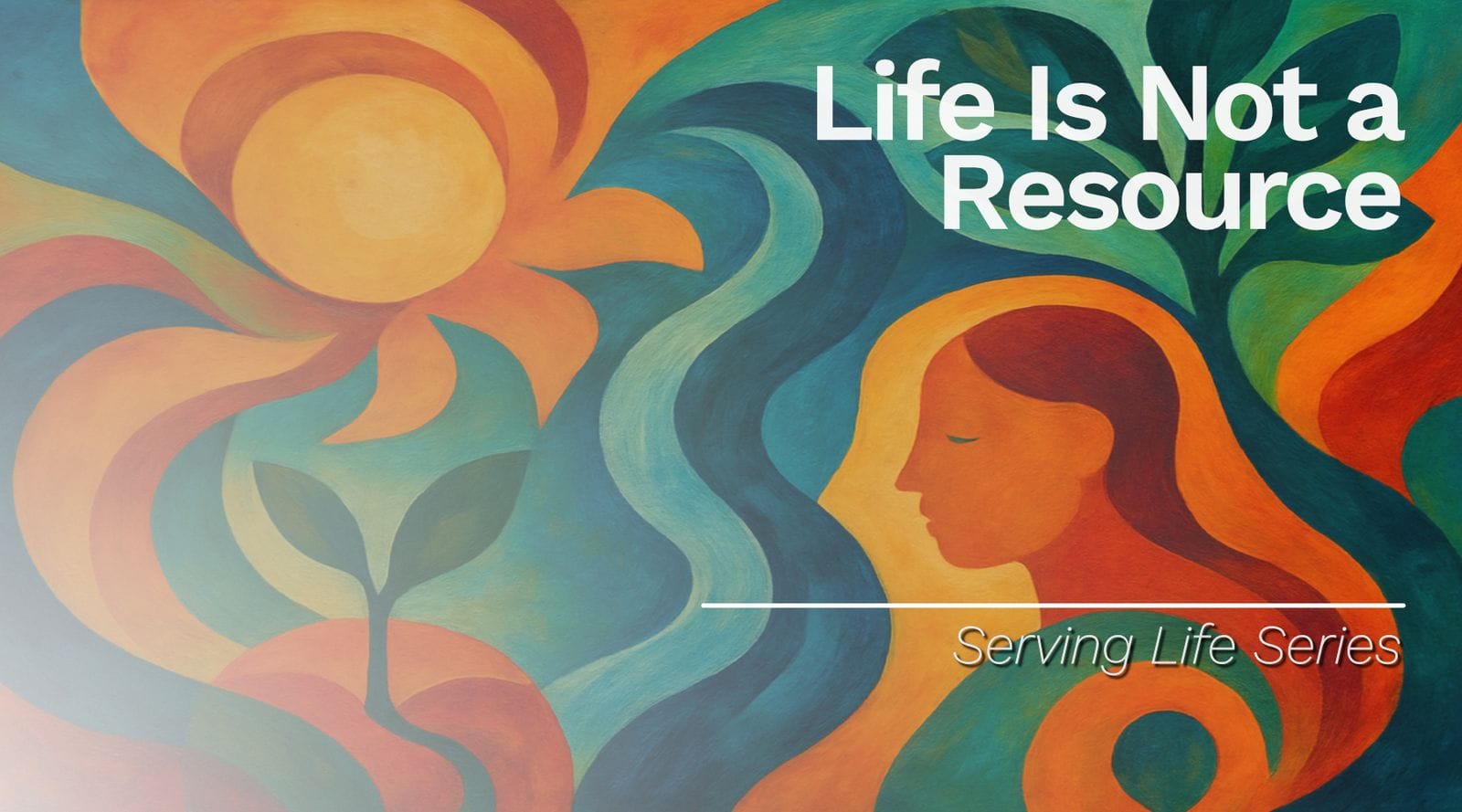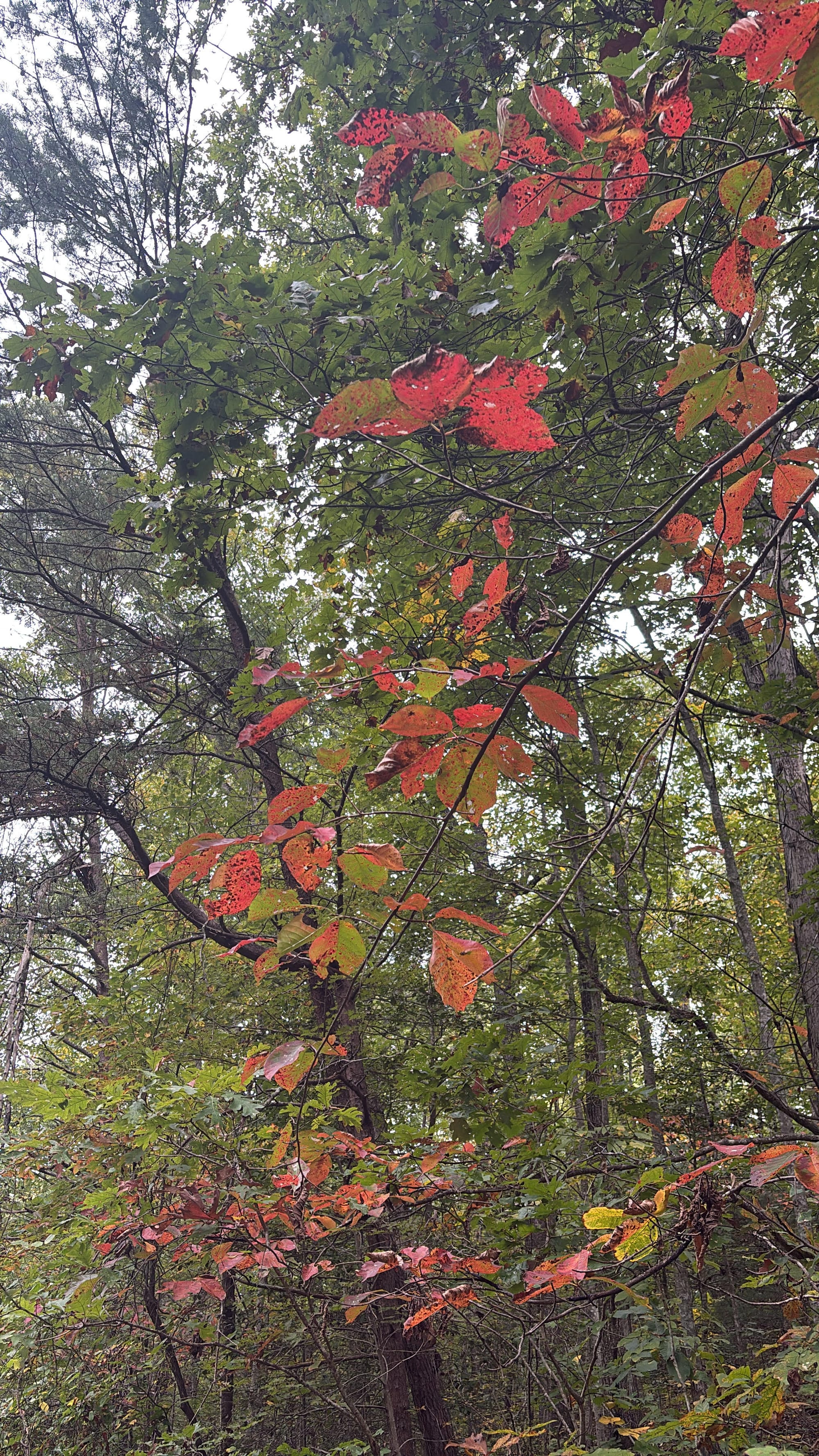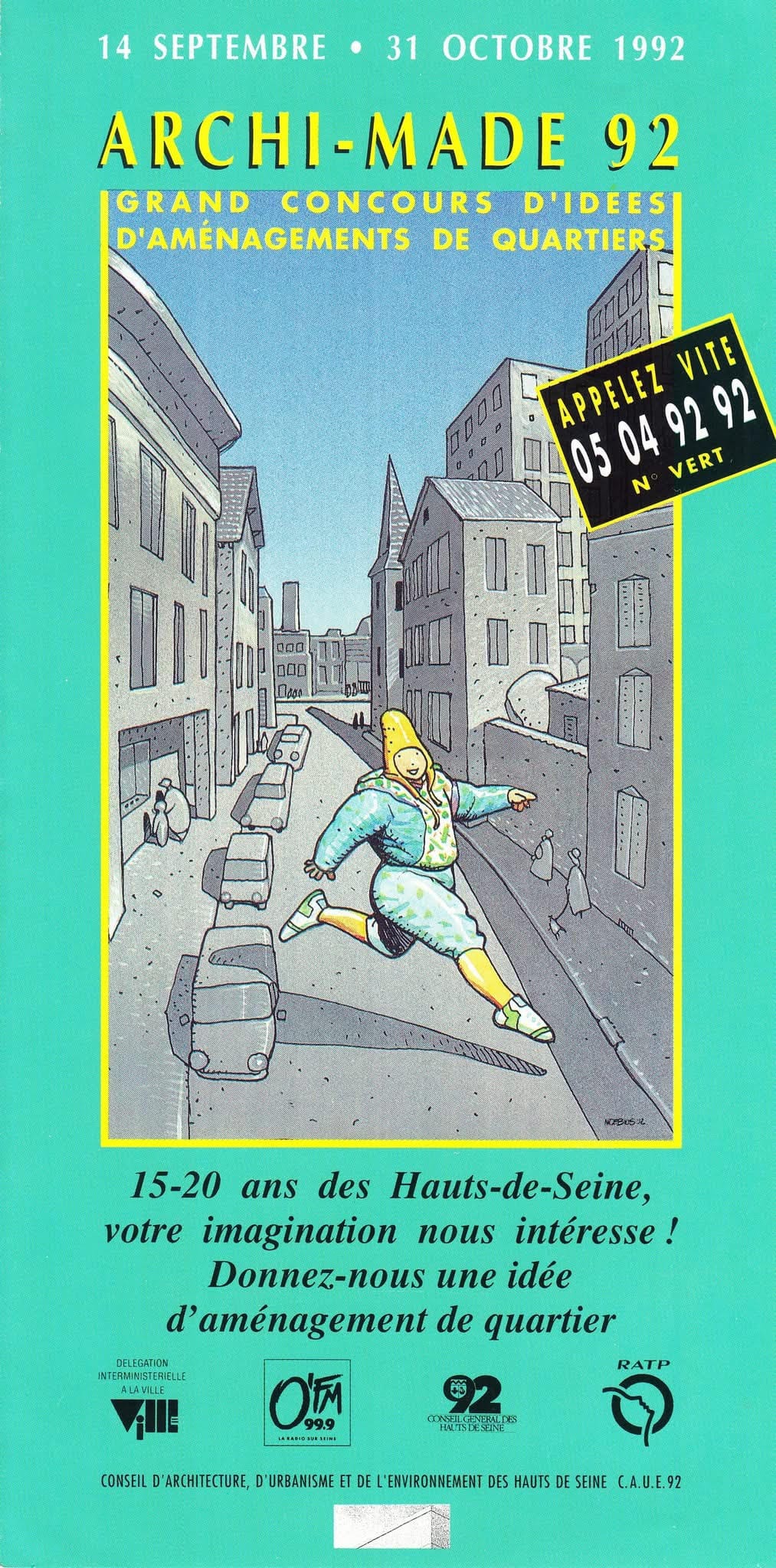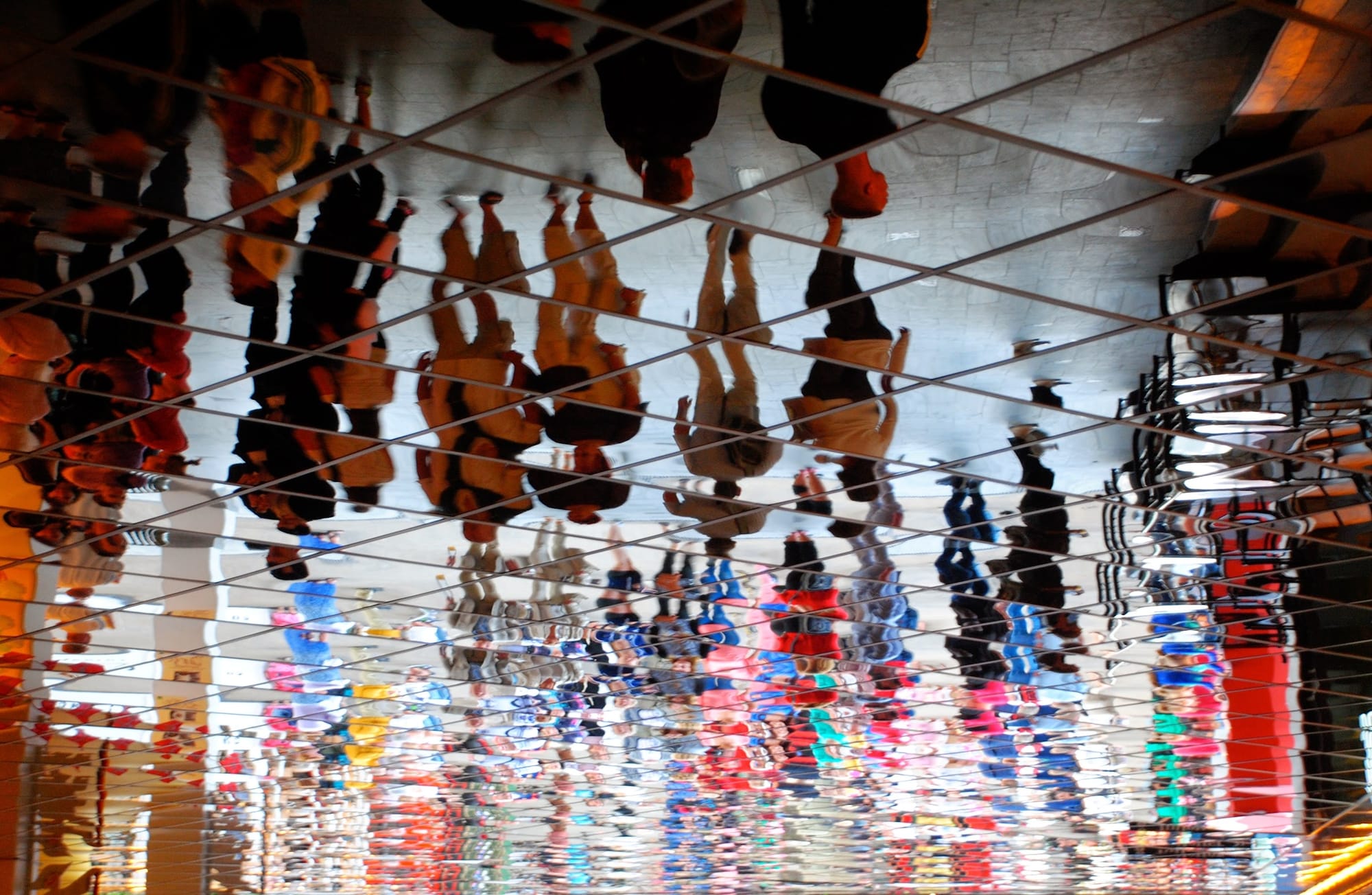Plex: 15 October 2025
Life is Not a Resource (Jose Leal); A housing fund for Swannanoa (Kevin Jones); Cmprssn (Scott Moehring); What's Going On: Worldviews (John Warinner)

The Biweekly Plex Dispatch is an inter-community newspaper published on the first and third Wednesdays of each month.
In This Issue
- Life is Not a Resource (Jose Leal)
- A housing fund for Swannanoa (Kevin Jones)
- Cmprssn (Scott Moehring)
- What's Going On: Worldviews (John Warinner)

Life is Not a Resource: Seeing work as it truly is — a means of serving life
by Jose Leal
“Human resources.”
“Natural resources.”
“Food stocks.”
We say these words casually, as if they were neutral, professional terms. Yet each one carries a quiet violence.
A person becomes headcount.
Water becomes an asset.
A forest becomes inventory.
Life itself is translated into inputs for something else: the company, the economy, the plan.
And if you listen closely, you can feel the dissonance. Part of you knows a forest is not inventory, that a river is not an asset, that you are not reducible to a number on a spreadsheet. Yet the system insists otherwise.
This only makes sense through a story lens — a way of seeing that places us outside of life and casts the living world as raw material to be managed. Through that lens, reducing life to units feels “practical.” It promises clarity, incentives, and control.
The Cost of a Story that Ignores Life
But there’s a cost. The more we frame life as a resource, the more we permit ourselves to strip it down. Forests fall, and it’s called growth. People burn out, and it gets measured as productivity. Rivers dry up, and it’s reported as efficiency.
The story doesn’t just distort what we see, it distorts what we allow ourselves to do. To be radical is to go to the root — and the root is life. Anything else is story layered on top.
Seen through a life lens, the same world looks different. Forests are communities of beings. Rivers are lifelines. People are participants in a larger whole. The reality doesn’t change — only the way we allow ourselves to see it.
And when the veil cracks, the change isn’t theoretical. It’s already happening. Where once workplaces ran on rigid control, people are experimenting with rhythms of trying, sensing, and adapting — companies testing co-management, farmers rebuilding local food webs, and teams choosing trust over rigid compliance. Where the world was flattened into categories and reports, some are beginning to see their work as part of an interdependent ecosystem, designing food webs rather than just supply chains. And where contracts once defined everything, teams are reclaiming trust and care as the foundation of their work.
These are not strategies or frameworks. They’re not new stories to believe in. They are signals of life rerouting itself whenever story drifts too far from reality.
The Defence of Story
Economists will argue: “But this system works. Treating life as resources has motivated people to work, created order, and built economies that lifted billions from poverty.” And yes, through the story lens, the logic holds.
But look around. What looks like progress in story is often life depleted to keep the story alive. Soils thin. Waters recede. People drift between exhaustion and disengagement. Cultures unravel. Supply chains turn brittle. Workplaces require endless “engagement programs” because the work itself doesn’t feed anyone’s life. Property, contracts, and prices may coordinate complexity, but the bill is steep: a system running on depletion — of land, of water, of trust, of meaning.
Motivation isn’t missing. Meaning is. People don’t need to be wound up; they need to be plugged in — to real needs, real feedback, real belonging. When work finds meaning in life, the energy doesn’t drain — it renews.
Change the Ground
The dissonance you feel is not confusion — it is life rebelling against the fiction. And that rebellion is not abstract. It can be lived now.
If this lands, don’t write another policy. Change the ground everyone is standing on. That is the radical move — to return to life as the foundation of work. Try this:
- Rename the frame. Swap “HR/Headcount” for “People & Collaboration.” Replace “resources” with “capabilities” or “contributors.” (Language shapes what’s “obvious.”)
- Surface the real need. For any project, write the living need at the top: What parts of life are served? How will we know? Keep it visible.
- Make one flow healthier. Pick a living flow your org touches (soil, water, time, attention). Choose one move that strengthens it—and account for that alongside money.
- Design one choiceless choice. Add a small, clear signal so the life-serving action is the easiest next step (default settings, one-click path, visible feedback).
This isn’t a new plan, framework, or model. Those are all tweaks on the same story. And the point is not that the old story is wrong and a new one would be right. The point is that any story that puts itself ahead of life is unsustainable.
Life doesn’t wait for strategies or bend to models. It regenerates — and when story forgets that — no matter how clever, efficient, or profitable — life collapses beneath it.
The piercing recognition is this: story is never reality. Life is. And any system that forgets this will burn itself out, leaving only the reality it tried to command.

A housing fund for Swannanoa, my neighborhood
by Kevin Jones
The fund can be a tool for organizing and gaining a voice for our low status neighborhood of Swannanoa.
Here is the concept as I’ve walked it around to community partners, organizers, etc.: Swannanoa: Building an Accessible Housing Fund & Community Voice
The Challenge
• Housing crisis: 1 in 6 neighbors lost their homes or had them rendered uninhabitable.
• Lack of representation: The current small area plan has realtors and the Chamber, but no Latino voices. Community partners boycotted when asked to serve as token members. Because houses were on average $100k lower in market value and rents were cheap, it is a hub for Latino residents and African Americans displaced by gentrification in Asheville.
• No gathering spaces: With no grocery store, no post office and just one restaurant (in a brewery), there is nowhere for neighbors to come together.
The Solution
A Community-Embedded Housing Fund
• Inspired by Ujima in Boston.
• Enshrines community voice in investment decisions.
• Fair return structure:
• Low-dollar investors (e.g., $100) earn a higher rate of return.
• Affluent investors accept a lower return.
• Includes a foundation PRI note to attract catalytic capital.
A Latino Business Association
• Creates a platform for Latino entrepreneurs and families.
• Ensures representation and power in local decision-making.
Third Places
• Partner David Greenson of People’s Place has funding streams for new gathering spaces.
• A “third place” in Swannanoa would give residents a home base for community life. As people applied for housing renovation or construction loans, a new service, Ask Ben, developed by Colorado partner Gary Community Ventures, can guide them into federal and state government programs and funds they are elligible for.
The Vision
• Swannanoa Community Together (SCT): Multi-racial, multi-lingual leadership at the center.
• Pairing the housing fund with a Latino business association and third places builds:
• Political power for underrepresented groups.
• Assets to fight displacement.
• Community infrastructure for resilience and belonging.
Swannanoa doesn’t just need “affordable housing.” It needs a community-controlled pathway to dignity, ownership, and voice.

Cmprssn
by Scott Moehring
There's too much stuff.
We are so small, and there is just so much of everything else. With just a little reflection we can see that the ratio of our knowledge to reality must be essentially... zero.
finite Knowledge ÷ infinite Reality ≈ 0
K/R ≈ 0
We rely on others to compress reality for us. "The markets were up today." "That movie is deeply affecting." "The rally had a huge turnout".
We know there is more to the compression we’re given, but it's easy to accept it as is. To resist digging. To not ask the follow-up. To not check the sources, and then to check their sources.
I don't know about climate change. Well, not directly. If nobody had told me about it, I wouldn't have noticed anything unusual in the weather around me. For my whole life some years were warmer, or colder, or had deeper snow. But my senses would have told me nothing else. So why do I believe in climate change? Because I trust people who compressed the interpretations of people who compressed data that other people collected. I trust the compressions.
We choose some sources with compressed facts. We choose other sources that are compressed opinions and speculations about facts. Still other sources are compressed opinions about compressed opinions about compressed speculations.
We use compressions to discuss books we haven't read. Or we confidently reference books we have read, while overlooking that they are a compression of just a small percentage of the author’s readings and conversations and experiences and ideas. We trust they earned the authority to use their compressions. Did we?
A great compressor can be an efficient path to deeper understanding. A great compressor can also be a manipulative obscurer of reality. Is your source compressing for understanding, or for manipulation? What was left out, and why? What single word was chosen to represent dozens, or thousands? Would the omitted details (if revealed) add nuance and depth to the same story, or would they create a very different story?
Every system map is highly compressed. Every node and edge in a network graph is a compressed system. If you zoom in, every whole has parts. Can a single label define something? Can it define someone? That’s the closed door of unquestioned compression, a single shiny nameplate on the outside, summing up a complex world of hidden details behind it.
Alas, compression is required. It’s the only way our limited selves can interact with the world. However, it’s not required that compression have high fidelity. The very nature of compression is that it excludes. The perspective and intent of the compressor determines what gets through. The map is not the territory, and a tourist guide is not a Mercator projection is not a globe.
What is your compression fidelity test? "Good enough" has to be the realistic choice for most things most of the time, because information and perspectives are infinite, and we are not. We don't need to inquire about the life story of the person we have compressed to "the pizza delivery guy". But we could.
We think we can increase our information capacity by compressing what we consume. But at what point does ingesting more of less become splashing in the shallows while pretending we are masters of the seas? How many of the compressions that we casually toss around do we understand deeply enough that we could expand the summary sentence or sound bite back to it’s uncompressed form? Once again, have we earned the compressions we use?
Compression pretends. It pretends it’s not compressed, that all the important stuff is retained, all the relevant details are included. It tells us in a reassuring way, “I’m all you need to know about that.” Maybe so, but maybe not.
Compression excludes
Cmprssn xclds
Cmpn xld
C x

WHAT’S GOING ON
WORLDVIEWS
by John Warinner
You and I live in different worlds.
Our beliefs shape our experiences.
Each of us lives within our story about what the world is and how the world works. This story is constructed from the unique place and time of our birth; the genetics and culture of our ancestors; the homes and environments in which we were raised; and our own perspectives, perceptions, interpretations, beliefs, and agreements. This story quietly guides what we care about, what we notice, and how we respond to our world. We rarely stop to name it, but it’s always there — shaping how we live and who we become. This story is our worldview. Mine is not yours, and yours is not mine.
What a Worldview Is — and Why It Matters
A worldview is the set of beliefs and understandings we hold about reality, life, and what matters most. It’s the lens through which we perceive everything — influencing what we see and hear, how we interpret change, and how we imagine the future.
When we become aware of it — when we can name it, question it, and evolve it — we begin to live more consciously, with greater humility, clarity, and compassion.
Two Ways of Seeing the World
There are two ways to consider a worldview — one from the head, and one from the heart.
The thinking view maps ideas about what’s true, real, sacred, and right. It helps us organize knowledge and values, but it often stays abstract.
The living view feels more human:
- How do I know what’s true?
- What gives my life meaning and purpose?
- What do I hold sacred, and why?
- How do I want to live?
Our worldview isn’t just something we think about — it’s something we live through. It shapes everything we do: what we look at, what we look for, what we listen to, what we listen for, what we feel, how we feel, what we desire, what we intend, and ultimately what we do.
Therefore, our worldview affects our relationships, our choices, and our sense of belonging in our world. These two ways of experiencing the world work together, bringing our worldview to life.
Many Stories, One Truth
There are 8.3 billion people in the world, each born in a different time, place, and family — each shaped by unique experiences. That means there are 8.3 billion worldviews, each one a living story about what is real and what matters.
Every one of those worldviews differs from mine.
Each person knows something that I do not know.
Each person has experienced something that I have not experienced.
This reminds me that my worldview — however coherent it may seem — is necessarily incomplete and inaccurate in ways I have not yet perceived.
What is objectively real and true is the same for everyone. But none of us sees it completely. Our stories about the truth are not the truth.
In The Fifth Agreement, Don Miguel Ruiz observes that every belief and perception is only a symbol — a reflection of reality, not reality itself. Ruiz invites us to “be skeptical, but learn to listen.” Listening deeply honors the possibility that every person we meet holds a fragment of understanding we cannot see alone.
When I remember this, I become less attached to my own certainty and more open to the perspectives and insights of others.
Living the Practice
Our worldview is not fixed; it’s a story we constantly rewrite as we live each moment of our lives. Awareness gives us the freedom to question old agreements and choose new ones.
Every encounter, every conversation, becomes an invitation to see a little more of the whole. When we listen with curiosity instead of judgment, and question with compassion instead of cynicism, our worldview becomes not just a lens but a living bridge — connecting us to one another and to the deeper reality we all share.
An Invitation to Reflection
What story are you living within, right here and right now?
How is your worldview shaping what you are seeing, feeling, and doing?
How might your experience of life change if you saw every person as a teacher — each offering a glimpse of truth that you had not yet seen?

Thank you for reading! The next issue will be published on 29 October 2025. Email Kevin with suggested submissions.
Grateful appreciation and many thanks to Jose, Kevin, John, and Scott for their kind contributions to this issue.